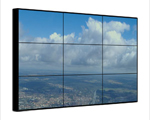Out of curiosity, we asked one of our current clients what made them pick Acoustics By Design to be their audio-video consultant for their corporate webcast auditorium project. We beat out several national AVL consulting firms to get the project, so what made the difference? Well, there were a list of reasons why ABD was the best fit. One reason was that we took time to understand the client’s vision, and that we proposed the concept of a video wall rather than the traditional approach of using several projectors to accomplish their complex webcasts. Cool. So why did we pitch the idea in the first place?
It’s all about meeting the client’s needs; that’s always first in our minds. Since we do not sell any products or represent any lines of equipment, we are free to recommend anything without it affecting our bottom line. Thus, we are paid only for our objective advice: audiovisual design and acoustical engineering skills.
The corporate auditorium was an existing space, so we had to work within space constraints. The main problem we identified was the small stage size. There was not enough room for a presenter to stand on the stage and make a presentation without walking in front of the projected image. Rear screen projection was not an option due to the building layout. We knew it would be a different approach, but here’s why we proposed the video wall.
With corporate video walls, the presenter can stand anywhere on the stage without worrying about casting a shadow on the image or getting the projector light in her eyes. This is especially important when the presenter is captured on a video recording. Video walls have a much higher contrast ratio and can perform well in almost any lighting scenario (whereas projectors function best in lower lit rooms). Another benefit was the space saver issue, and space was a key factor for this project. Finally, the combined resolution of a video wall system is greater than the highest resolution projectors, providing more pixels and more flexibility for presentations, video conferencing, video playback, and training sessions.
Although video wall systems beat projectors in almost all functional categories, there are a number of downsides that need to be considered. The biggest is cost. Video walls can be pricey compared to the cost of a projection system depending on the system and the video wall processor. In critical viewing environments, each video wall monitor will need to be color calibrated – which can take a significant amount of time. They will use more power, and they will generate more heat than a projector based system. Some critics cite the edges of the screen (aka the “bezel”) and the “seams” they create as the biggest disadvantage. However, with most new video wall monitors, this problem is quickly disappearing. Manufacturers are making flat panel displays with ultra thin bezels less than 1/8”. So from where your audience is sitting, the seams are nearly invisible.
For this project, Acoustics By Design was selected because we focused on the client’s unique needs. Sure, we recommended a quality video wall system design for a corporate webcast auditorium project. But next time around, we’ll be working with a different client with a different set of needs. And we will address those needs with complete objectivity, just like we always do. That’s why, when people need the services of a corporate video wall designer or an independent digital signage system consultant, they call Acoustics By Design.

Thank you for the article. You lay out a reasoned summation that atests to Acoustics By Design’s phylosophy of approach to your work. I teach acoustics at Lawrence Technological University in Southfield Michgan and as part of that effort I attempt to show that, in their writing and other means of communication, the professional is always put in the posistion of selling ones self and the service to the client. I hope to cite the tennants of this article to support this case. Thank you again. David C. Paterson
Thank you David. We are happy to be included as a case study in your teaching materials.